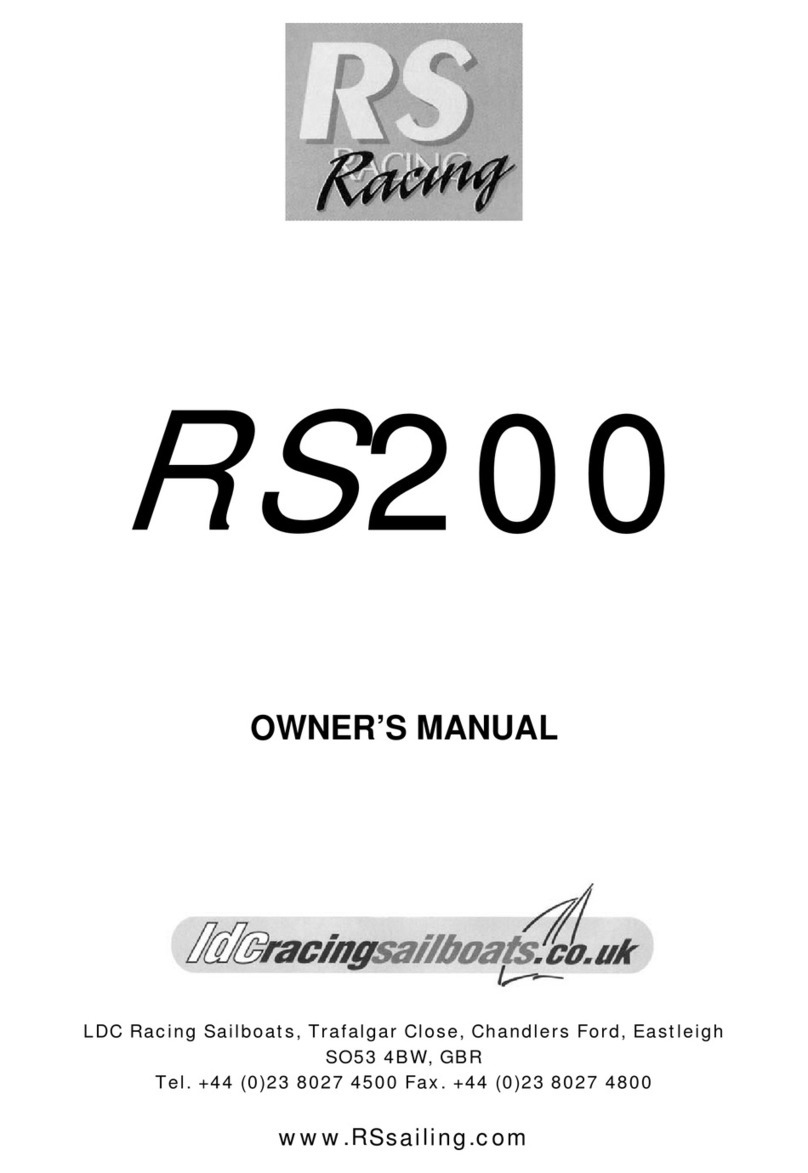If are sailing with a crew, he or she should swim round to the bow, and hang
onto the tackbar or the rope handle, whichever is fitted. Then you should
proceed round to the transom where the righting line is stowed. Unclip the
“high side” righting line, and keep hold of it as you proceed around the rudder
to the centreboard area. If the boat has inverted the righting line is easier to
locate.
If the boat has inverted:
The righting line will help you climb onto the hull if it is inverted, it being best to
use the line across the hull. Stand on the underneath of the gunwhale (now
facing upwards), adjacent to the centreboard, where there is a grippy surface
for feet or knees. Pull on the righting line from across the upturned hull and as
the boat starts to come back up try to work your way up the hull and onto the
centreboard, as it comes horizontal. Do not worry if you are unable to do so.
If the boat is on its side:
Hold the righting line as high up as you can, and brace your feet against the
hull, and pull. The boat will start to come upright, and as it does work your
hands up the righting line towards the gunwhale.
WARNING
If the mast is lying into the wind as you pull it up the boat will flip up
quickly and you should be aware to work your way up the righting line to
the gunwhale a bit quicker.
Once the boat is upright and you are in the water holding the righting line, you
can either pull the gunwhale down to you, grab the toestrap and haul yourself
in or go around to the transom and climb in over there. The rope handle on
the gunwhale can help you back on board, not forgetting to go over the
transom bridle, which should be loose enough to push down against the deck.
To make all this easier, if you have a crew, who would have been holding the




























